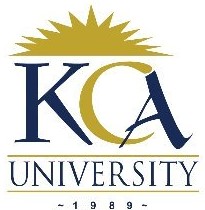
UNIVERSITY EXAMINATIONS: 2014/2015
ORDINARY EXAMINATION FOR THE BACHELOR OF BUSINESS
INFORMATION TECHNOLOGY
BIT 1109 BBIT 102 COMPUTER ORGANIZATION &
ARCHITECTURE
DATE: DECEMBER, 2014 TIME: 2 HOURS
INSTRUCTIONS: Answer Question ONE and any other TWO
QUESTION ONE (30 MARKS)
a) Differentiate between computer architecture and computer organization.
(6 marks)
b) Explain the significance of layered architecture. (4 marks)
c) Define Super Scalar Processor (4 marks)
The scalar processor executes one instruction on one set of operands at a time
d) Write brief notes on a Pentium processor (5 marks)
e) What is parallelism and pipelining in computer Architecture? (6 marks)
f) Define ASCII code (3 marks)
g) Computer the sum for the following binary numbers 110101+110111 (2 marks)
QUESTION TWO
a) Briefly explain instruction format. (6 marks)
b) Differentiate between RISC and CISC. (8 marks)
c) What is super pipelining? (2 mark)
e) State the memory hierarchy (4 marks)
QUESTION THREE
a) Distinguish between the cache memory and virtual memory (4 marks)
b) What is meant by DMA? (5 marks)
c) Define the terms: Seek time, Rotational Delay, Access time. (6 marks)
d) A Hard disk with 5 platters has 2048 tracks/ platter, 1024 sector/track (fixed
number of sector per track) and 512 byte sectors. What is its total capacity?
(5 marks)
QUESTION FOUR
a) Differentiate among direct mapping and associate mapping. (5 marks)
b) Describe the FIVE computer generations. (10 marks)
c) List the FIVE functions of the operating system. (5 marks)
QUESTION FIVE
a) Define the following operating system terms (3 marks)
i) Multiprocessing
ii) Multiprogramming
iii) Multitasking
b) State the FIVE key advantages of having a database management system in an
organization. (5 marks)
c) What do you understand by pipelining in computer architecture? (2 marks)
d) Write various steps involved to perform Mail-Merge. (5 marks)
e) State the challenges for using voice recognition and pattern recognition systems for
input. (5 marks)
